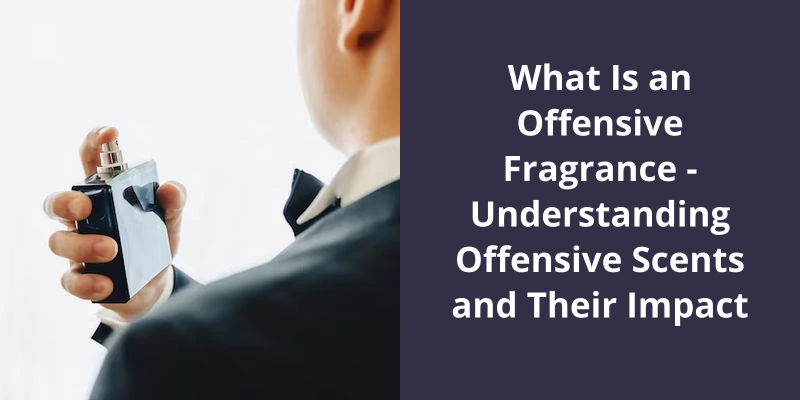Dipropylene Glycol is not considered flammable. It’s a type of chemical that’s commonly used in various products, ranging from skin care items to industrial solvents. Although it may cause some irritation if it comes into direct contact with your skin or eyes, it won’t catch fire under normal conditions. That’s because it has a high flash point, which is the temperature at which a particular substance ignites in the air. So while you should still handle Dipropylene Glycol with care to avoid potential skin or eye irritation, you don’t need to worry about it posing a fire hazard.

Is Propylene Glycol Explosive?
Propylene glycol is a colorless, odorless, and viscous liquid that’s commonly used as a solvent, humectant, lubricant, and vehicle in various industries, including pharmaceuticals, cosmetics, food, and chemicals. It’s considered to be a safe and effective ingredient in these applications, as it’s generally recognized as safe (GRAS) by the FDA and has a low toxicity profile. However, there’s one form of propylene glycol that’s explosive under certain conditions: propylene glycol dinitrate (PGDN).
PGDN is a highly sensitive and unstable compound that’s formed by nitration of propylene glycol with nitric acid and sulfuric acid. It’s used as an explosive ingredient in some military and industrial applications, such as rocket propellants and blasting agents. PGDN is extremely hazardous when exposed to heat, flame, or shock, as it can detonate violently and release toxic gases.
When PGDN is involved in a fire, it poses a significant risk of explosion and fireball. This is because the compound is thermally unstable and decomposes rapidly, producing large amounts of heat and gas. The resulting explosion can generate shock waves, fragments, and fire, causing severe damage and injuries. Therefore, it’s essential to handle PGDN with extreme care and follow strict safety protocols when using or storing it.
To extinguish a fire involving PGDN, it’s recommended to use dry chemical, carbon dioxide (CO2), water spray, or a foaming agent. These agents can smother the fire and prevent the release of gas and heat. However, under no circumstances should water be used on PGDN, as it can cause the compound to explode violently. Additionally, firefighters and other responders should wear appropriate personal protective equipment (PPE) and maintain a safe distance from the fire to avoid exposure to poisonous gases and explosion hazards.
In case of a fire involving PGDN, specialized agents and PPE should be used, and responders should keep a safe distance to avoid exposure to toxic gases and explosion hazards. By following these guidelines, the risks associated with PGDN can be minimized, and safety can be ensured.
What Are Other Forms or Derivatives of Propylene Glycol, and Are They Also Explosive or Hazardous?
There are multiple forms and derivatives of propylene glycol, but not all of them are explosive or hazardous. Some are used in cosmetics, food, and pharmaceuticals, while others can be used as solvents or antifreeze in industrial applications. It depends on the specific chemical properties and intended use of each derivative.
When handling chemicals, ensuring their safety and proper usage should be a top priority. One particular substance that raises concerns about it’s flammability is glycol. Specifically, ethylene glycol diethyl ether has been identified as a flammable liquid. As with any flammable liquid, it’s essential to take precautionary measures and follow appropriate safety protocols to prevent the risk of fire. In the event of a glycol fire, it’s crucial to use the right extinguishing agent to minimize the production of poisonous gases that could pose harm to human health and the environment.
Is Glycol a Flammable Liquid?
Glycol, a type of organic compound, is a common ingredient in many products, including antifreeze, brake fluids, and coolants. While it’s widely used in various industries, there’s often confusion about whether or not it’s flammable. In general, not all glycols are flammable.
Ethylene Glycol Diethyl Ether is a highly volatile and flammable liquid that’s commonly used as a solvent in a variety of applications. It’s a flash point of around 1 degree Celsius, which means it can ignite easily under certain conditions. This type of glycol should be handled with extra care to avoid any accidental fires or explosions.
In the case of Ethylene Glycol Diethyl Ether, dry chemical, CO2, water spray, or an alcohol-resistant foam or other foaming agent should be used to extinguish any fires that may occur.
Another potential danger of Ethylene Glycol Diethyl Ether is that poisonous gases are produced in the event of a fire. When exposed to high temperatures, this glycol can release toxic fumes that can cause serious harm if inhaled. As such, it’s crucial to maintain good ventilation in any areas where Ethylene Glycol Diethyl Ether is used or stored.
Differences Between Various Types of Glycols and Their Flammability.
- Ethylene glycol is highly flammable.
- Propylene glycol is also flammable but less so than ethylene glycol.
- Dipropylene glycol is considered non-flammable but can still contribute to a fire if other flammable materials are present.
- Triethylene glycol is also non-flammable but has a higher boiling point than the other glycols mentioned.
Source: Ethylene glycol
Now that we’ve learned about dipropylene glycol and it’s common uses in cosmetics, it’s important to understand whether or not it contains propylene glycol. This information can impact product recommendations and ingredient concerns for those with sensitivities or allergies. Let’s explore this topic further.
Does Dipropylene Glycol Contain Propylene Glycol?
Dipropylene glycol is a popular cosmetic ingredient that’s commonly used in various beauty products due to it’s excellent moisturizing and skin conditioning properties. Many people aren’t aware of this compound, but it’s actually a byproduct produced in the production of propylene glycol. However, despite being derived from propylene glycol, dipropylene glycol doesn’t contain the same chemical structure as it’s precursor.
In perfumes, it’s possible to find concentrations ranging from as low as . 004% up to as high as 50%, depending on the intended effect. This is because dipropylene glycol acts as a solvent that helps to dissolve fragrances and enhance their overall scent profile.
It’s commonly used as a solvent in the production of paint, varnish, and ink. It’s also used as a plasticizer in the production of plastics and resins. Furthermore, dipropylene glycol is frequently found in antifreeze and de-icing solutions because of it’s ability to decrease the freezing point of water.
How Dipropylene Glycol Is Produced and Processed
Dipropylene Glycol is typically produced by reacting propylene oxide with water. The reaction mixture is then distilled to remove excess water and unreacted propylene oxide. The resulting Dipropylene Glycol product is then further purified by distillation. This process ensures that the final product is of high purity and meets the required specifications for it’s intended use.
Overall, dipropylene glycol is a versatile chemical compound that serves many purposes in various industries, from plastics manufacturing to personal care products. It’s non-toxic properties and ability to act as a solvent make it a valuable ingredient in the formulation of perfumes, as well as skin and hair care items. Let’s further explore some of the key areas in which this chemical is utilized and the benefits it provides.
What Is Dipropylene Glycol Used For?
Additionally, dipropylene glycol can be used as a food additive and preservative. It helps to extend the shelf life of certain foods and prevents spoilage by inhibiting the growth of bacteria and fungi. It’s ability to blend well with water also makes it an ideal ingredient for creating emulsions and suspensions in the food industry.
The chemical compound is also commonly used in the pharmaceutical industry as a solvent and co-solvent for a variety of drugs and medications. It’s low toxicity and relatively low cost make it an attractive option for use in drug formulations. In particular, dipropylene glycol is often used as a solvent for oral medications due to it’s ability to improve the absorption and bioavailability of the active ingredients.
Another important application of dipropylene glycol is in the production of unsaturated polyester resins used in the production of plastics, coatings, and adhesives. It’s used as a co-monomer or crosslinking agent to help improve the properties of the final product.
Finally, the chemical compound has numerous industrial applications as a coolant and antifreeze agent, in the manufacture of paints and coatings, and as a lubricant additive. It’s ability to remain stable at high temperatures and resist corrosion make it an ideal additive for use in industrial applications.
It’s low toxicity, solvent properties, and blending ability make it a popular additive in perfumes, skin and hair care products, and food products. It’s use in drug formulations, plastic production, and industrial applications also make it an important and valuable chemical in modern manufacturing and commerce.
The Environmental Impact of Dipropylene Glycol and It’s Use in Sustainable Manufacturing
- Dipropylene glycol is commonly used as a fragrance ingredient, viscosity controlling agent, and solvent in several industries.
- It’s a low acute toxicity level, but high exposure to it may cause irritation to the skin, eyes, and respiratory system.
- When disposed of improperly, dipropylene glycol may have long-term environmental impacts on soil and water resources.
- However, the use of dipropylene glycol in sustainable manufacturing processes has been shown to reduce environmental impacts by reducing waste, greenhouse gas emissions, and energy consumption.
- Companies can also take steps to minimize the environmental impact of dipropylene glycol by ensuring proper disposal, recycling, and safe handling practices.
Now that we know that propylene glycol is soluble in water and safe for human consumption, let’s take a closer look at some potential applications and benefits of this versatile chemical.
Does Propylene Glycol React With Water?
Propylene glycol has been used for a variety of applications, particularly in food and cosmetics because of it’s solubility in water. Through it’s hygroscopic property, it can easily absorb and retain moisture, making it an ideal ingredient in certain formulations. But the question remains, does propylene glycol react with water?
However, there may be some slight physical changes in the mixture, such as the boiling point and freezing point, but these are marginal. At temperatures below 0°C, the mixture may form crystals, but these can easily dissolve when the temperature rises.
For example, at lower temperatures, the solubility of propylene glycol in water decreases, and vice versa.
This mixture has unique properties, including excellent solvent properties, hygroscopicity, and low toxicity.
What Are the Other Uses of Propylene Glycol Aside From Food and Cosmetics?
- Propylene glycol is used as a solvent in various industries such as pharmaceuticals, chemical manufacturing, and plastics.
- It’s also used as a humectant in tobacco products, helping to prevent them from drying out.
- Propylene glycol is used as a coolant in liquid cooling systems for computers and other electronics.
- It’s used as a preservative in some medicines and personal care products.
- Propylene glycol can act as a lubricant in some machinery and equipment.
- It’s used as a solvent in certain printing inks and dyes.
Conclusion
In conclusion, it’s important to note that dipropylene glycol may not have a specific DOT or hazard classification, but it’s still a combustible liquid that can present serious risks if not handled properly. It’s crucial to use the appropriate extinguishing agents in the event of a fire involving this substance, and to take steps to prevent the production of poisonous gases. All in all, it’s essential to exercise caution when working with dipropylene glycol in order to ensure the safety of oneself and others in the surrounding environment.





